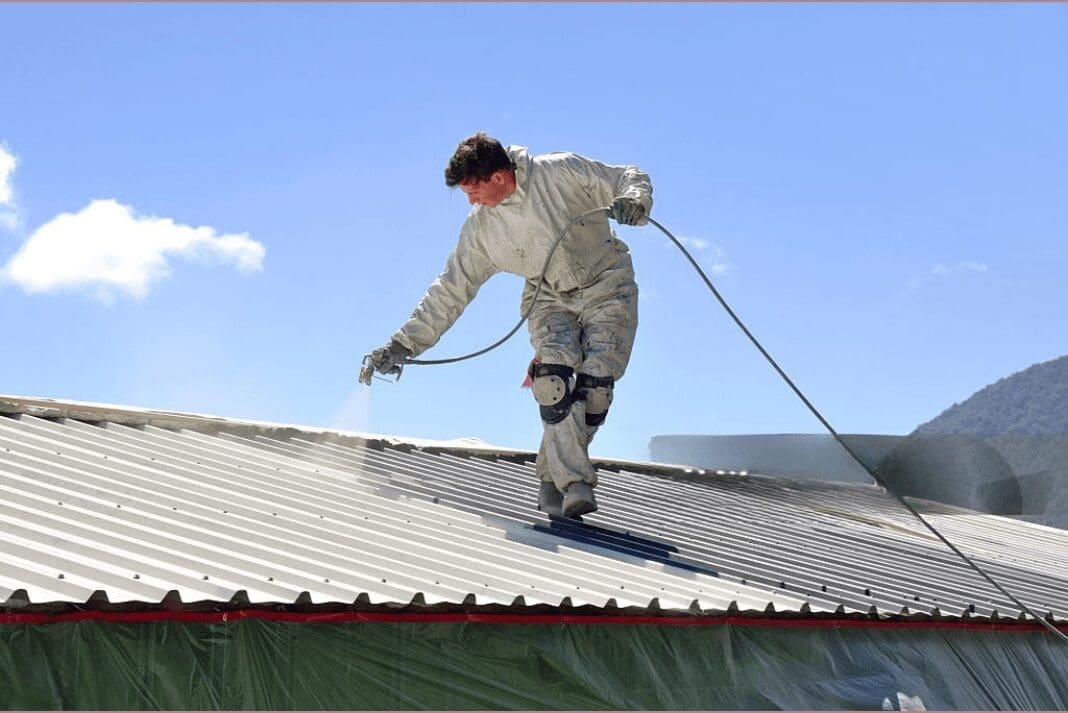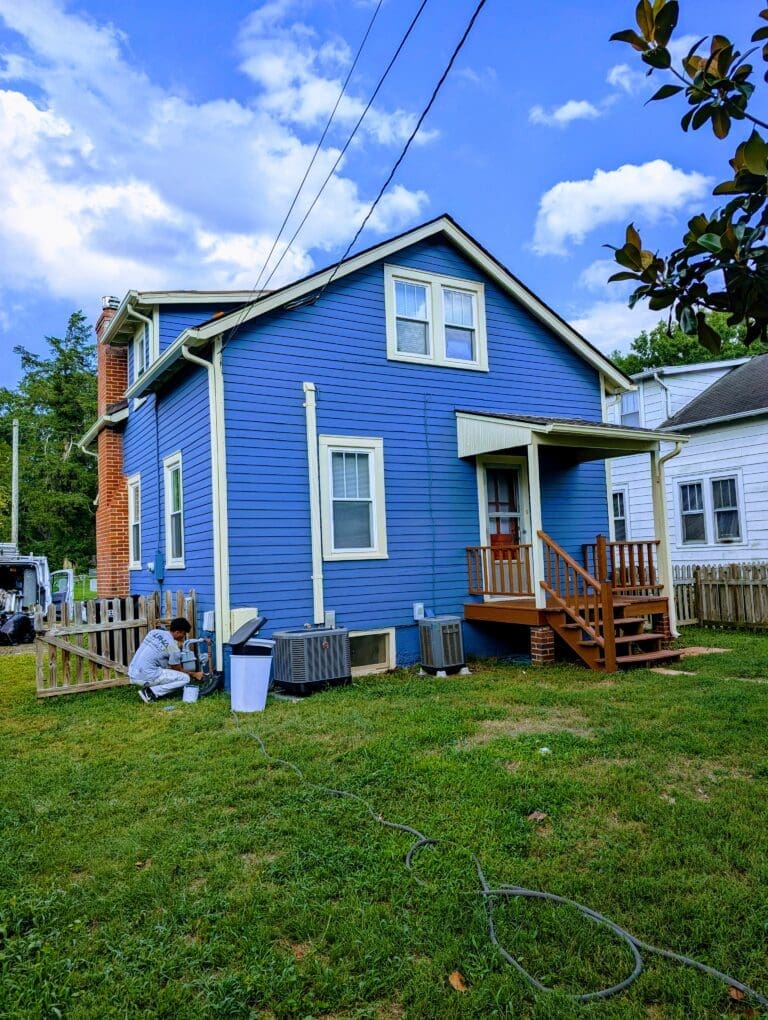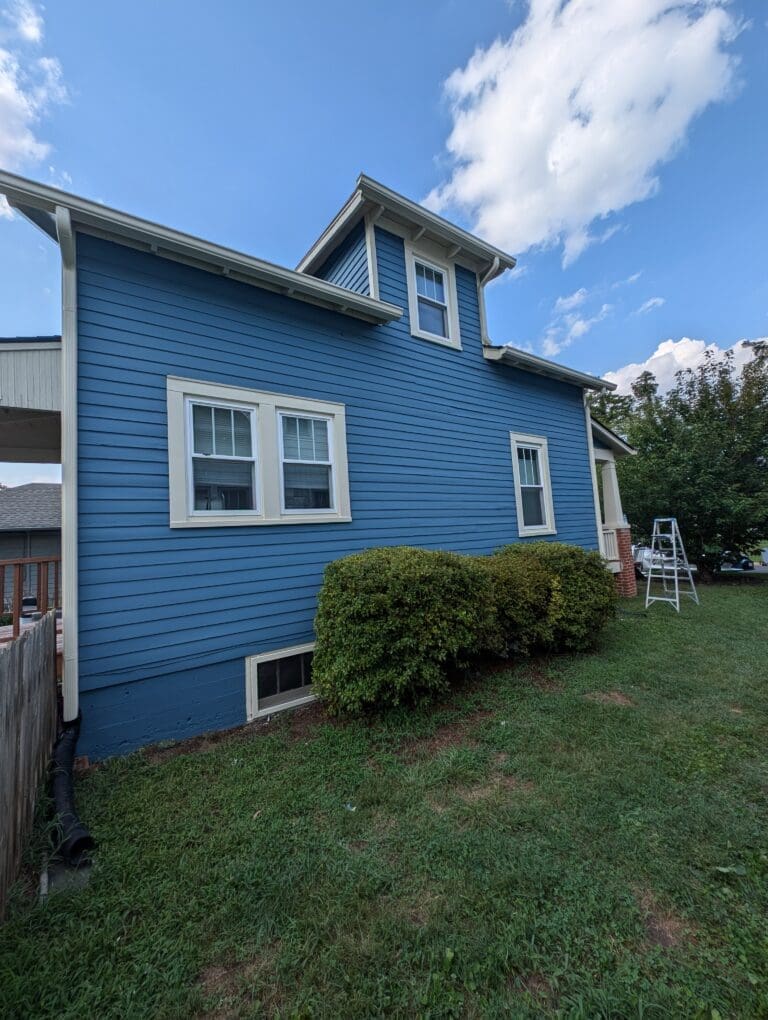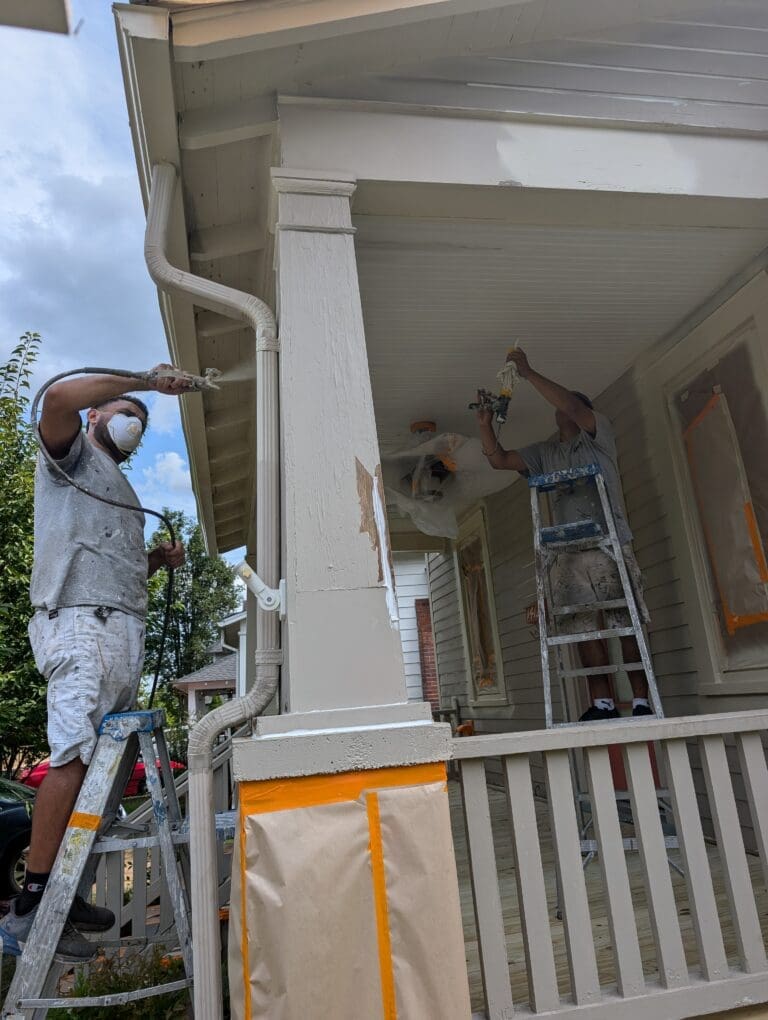Benefits of Professional Pressure Washing Before Painting
Surface preparation makes or breaks a paint job. Whether it’s an exterior siding, a deck, or interior masonry in a converted basement, paint adheres best when the substrate is clean, solid, and dry. One of the most effective ways to clean surfaces before applying a new coat is pressure washing. It’s not just about blasting off dirt — it’s about giving the paint the best chance at lasting as long as possible.
Alpha Painting LLC includes pressure washing as part of its preparation process for many exterior painting projects in Fredericksburg, VA. That early step plays a major role in the quality of the finished work. But beyond that, there are specific reasons pressure washing should always be considered before starting a paint job — especially when you’re aiming for durability, even coverage, and long-term protection.
Table of Contents
Removing Built-Up Grime That Paint Can’t Cover
Over time, dirt, dust, mildew, algae, and even pollutants settle on surfaces. These layers aren’t always visible until you start painting, and by then, it’s too late. Paint applied over a dirty surface may initially stick, but it will start peeling, bubbling, or fading prematurely. That kind of failure often shows up within a year — and at that point, the only solution is to strip and repaint.
Pressure washing ensures these contaminants are thoroughly removed. Unlike hand-scrubbing or basic rinsing, pressure washing reaches into cracks, crevices, and textured surfaces. Paint can then bond directly to the surface, not to a layer of debris or mold. The result is a cleaner substrate and a more stable paint film.
Killing Mold, Mildew, and Algae — Not Just Covering Them
Exterior surfaces, especially on shaded or north-facing walls, are prone to biological growth. Mildew and algae aren’t just cosmetic issues — they break down paint over time and trap moisture against the surface. If painted over, they’ll continue to grow underneath the paint, eventually pushing through or causing the paint to separate from the wall.
Professional pressure washing isn’t just about high pressure; it’s about using the right cleaners. Mold-killing detergents, when applied correctly, break the life cycle of these organisms. A quality contractor doesn’t just rinse the surface — they treat it so that regrowth is delayed. That treatment is a critical part of long-term paint performance, especially in humid climates or on buildings near dense tree cover.
Revealing Hidden Problems Before It’s Too Late
Paint often hides imperfections. Loose boards, cracks in the trim, nail pops, old flaking paint — these issues aren’t always visible until a surface is fully cleaned. A thorough pressure wash strips away the top layer of distraction so that problems underneath are easier to spot and fix.
Skipping this step can lead to missed opportunities for repair. Imagine investing in a full repaint, only to have it fail prematurely because rotted wood or deteriorated caulking wasn’t addressed. Pressure washing acts as a kind of diagnostic tool. Once the dirt and grime are gone, painters can assess the real condition of the surface and recommend the right prep work — sanding, patching, priming — that ensures a smooth and lasting finish.
Creating a Surface That Accepts Paint Evenly
Paint doesn’t just sit on a surface — it grips it. The better the contact, the better the coverage, adhesion, and finish quality. Surfaces that haven’t been properly cleaned often have uneven textures caused by pollutants or oxidized paint layers. That inconsistency can cause the new coat to look blotchy or streaky.

Pressure washing helps even out the surface by removing loose particles and oxidation. This is particularly important with chalky siding or fences that have sun-damaged coatings. A clean, firm base gives painters a uniform surface to work with, which means cleaner lines, better color consistency, and fewer touch-ups. For larger exterior jobs where coverage quality really matters — like commercial buildings or multi-story homes — that consistency adds real value.
Protecting the New Paint Job from Premature Failure
Paint is an investment. Whether it’s interior or exterior, property owners expect a freshly painted surface to last several years. One of the most common reasons paint fails early is poor surface preparation. Adhesion issues, moisture entrapment, and contamination all trace back to one thing: skipping or rushing the cleaning step.
Professional pressure washing gives the paint the right foundation. When combined with proper drying time and surface repair, it extends the life of the finish by several years. That’s money saved in the long run — less frequent repainting, fewer maintenance calls, and reduced risk of underlying material damage caused by water or mold getting in behind bad paint.
Saving Time Later in the Project
It may seem like pressure washing adds an extra step — and more time — to the job. But skipping it often leads to delays during painting. Peeling paint has to be scraped. Dust can clog sprayers. Dirty surfaces cause roller drag, meaning painters have to work harder to get even coverage.
Starting with a professionally cleaned surface makes the painting process smoother. Painters can move faster, apply coatings more evenly, and spend less time troubleshooting problems. That efficiency often results in a faster turnaround — especially for homeowners trying to coordinate multiple renovation tasks or commercial clients working within a project schedule.
Improving Curb Appeal Before the First Stroke of Paint
Pressure washing doesn’t just prepare the surface — it often improves the way a building looks even before the paint goes on. Clean siding, brick, fences, or patios immediately look brighter and fresher. That visual reset can help homeowners or business owners confirm their color choices or see which areas need more attention.
For real estate projects, that first impression matters. Even if the repaint is scheduled for the following week, a freshly washed property looks better to prospective buyers or tenants. It sends a message: this place is maintained, clean, and cared for. That perception boost is valuable whether you’re listing a home or refreshing a storefront.
Avoiding Damage from Improper Cleaning Techniques
There’s a difference between pressure washing and aggressive power washing by someone who doesn’t know what they’re doing. Too much pressure can strip wood grain, force water behind siding, or etch concrete. Using the wrong nozzle on a soft surface like stucco or fiber cement siding can do more harm than good.
Professional pressure washing uses calibrated equipment and trained operators who understand material sensitivity. A good painter knows how to clean without damaging trim, windows, caulk joints, or surrounding landscaping. That care ensures the structure is prepped — not compromised — before the next stage of the project begins.
Meeting Paint Manufacturer Requirements for Warranty
Most major paint brands offer warranties on their premium coatings — but they come with conditions. One common requirement is that the surface must be “clean, sound, and dry” before application. If a painter applies top-tier paint over a surface that hasn’t been properly cleaned, any warranty issues may be denied.
Pressure washing fulfills that “clean” requirement. By documenting that the surface was professionally prepared, contractors and homeowners both have better footing if warranty issues arise later. That extra peace of mind matters when investing in high-end products meant to last 10 to 15 years.
Supporting Proper Primer and Coating Bond
Pressure washing doesn’t replace sanding or priming — but it does support them. On surfaces like raw wood, fiber cement, or stucco, paint bonds best when the pores are open and clean. Washing strips away invisible contaminants that would otherwise prevent proper primer penetration. It also improves adhesion of stain-blockers and specialty coatings like elastomerics or waterproofing agents.
When painters apply products over a freshly washed surface, they get the full benefit of the product’s formulation. That bond is stronger, and the finish is more resistant to weathering, moisture, and UV damage.
Final Thoughts
Skipping pressure washing might save a few hours at the start of a painting project, but it often costs far more in rework, frustration, and premature wear. A clean surface is essential for paint to adhere properly and perform over time. It’s not an optional step — it’s foundational.
Pressure washing, when done professionally, is one of the most valuable ways to prepare a surface for a successful, long-lasting paint job. Whether you’re refreshing your home’s exterior or getting a commercial building ready for a new look, that investment in cleaning sets the entire project up for success.







